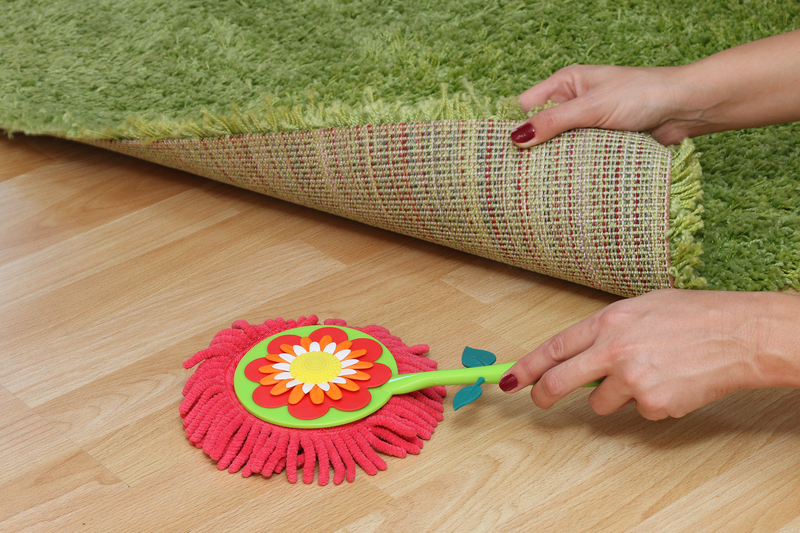Simple Steps to Eliminate Mould on Window Sills
Posted on 25/08/2025
Simple Steps to Eliminate Mould on Window Sills
If you've noticed unsightly black or greenish patches along your window sills, you may be dealing with a common but persistent household problem: mould growth. Left untreated, mould not only ruins the appearance of your windows but can also pose health risks and deteriorate your home environment. This comprehensive guide will walk you through effective, easy-to-follow steps to eliminate mould on window sills and prevent it from returning.

Why Does Mould Grow on Window Sills?
Understanding what causes mould on window sills is essential to tackling the problem at its root. Mould, a type of fungus, thrives in damp, warm, and poorly ventilated areas. Window sills become susceptible to mould for several reasons:
- Condensation: Windows are natural points where warm indoor air meets cold glass surfaces, resulting in condensation that provides moisture for mould to grow.
- Poor Ventilation: Lack of air circulation around windows aids moisture retention, creating the perfect breeding ground for mould spores.
- Leaking Windows: Damaged seals or gaps can allow rainwater to seep into your window sills, adding to the problem.
Health Risks Associated With Mould
Mould may seem like a minor inconvenience, but its effects are far from trivial. Prolonged exposure to window sill mould can trigger or worsen:
- Allergic reactions (sneezing, skin irritation, watery eyes)
- Asthma symptoms
- Respiratory infections
- Worsening of other chronic lung illnesses
Therefore, it is essential to remove mould from window sills as soon as you notice it.
Step-by-Step Guide: How to Remove Mould From Window Sills
Here's a detailed plan to help you effectively clean mould from window sills using simple tools and household ingredients. Always wear rubber gloves, a mask, and ensure the area is well-ventilated while cleaning mould.
1. Gather Your Supplies
- Protective gloves
- Face mask
- Goggles (optional, but recommended)
- Bucket
- Old cleaning cloths/towels
- Spray bottle
- An old toothbrush or scrubbing brush
- Cleaning solution: Choose one of these:
- White vinegar (undiluted)
- Baking soda and water paste
- Commercial mould remover
- Bleach solution (1 part bleach to 10 parts water) (Use cautiously and never mix with other cleaners!)
2. Remove Loose Debris and Dust
Before applying any solution, use a dry cloth or a vacuum cleaner with a nozzle attachment to remove dust, dirt, and loose mould spores from the window sill. This prevents spreading spores while you scrub.
3. Apply the Mould Removal Solution
Generously spray your chosen cleaning agent directly onto the affected areas. Let it sit for at least 10-15 minutes to penetrate and break down the mould.
- Vinegar: Kills up to 82% of mould species. It's safe for most window sill materials and is non-toxic.
- Baking Soda Paste: Mix 1 tablespoon of baking soda with water to form a paste; apply with a brush.
- Bleach: Use for white, non-porous surfaces as it can bleach color from painted or wooden sills.
- Commercial Cleaners: Follow manufacturer instructions carefully. Most are effective for quick removal.
4. Scrub Away the Mould
With your mouldy window sill soaked, use a brush or scrubbing pad to vigorously scrub away the growth. Pay attention to crevices and corners, where spores can linger. For stubborn patches, repeat the application and scrubbing.
5. Wipe and Rinse
Once the visible mould is gone, wipe down the sill with a clean, damp cloth to remove any residue from the cleaning solution and dead mould. Avoid further saturating the area with water--use minimal moisture.
6. Dry Thoroughly
Moisture is mould's best friend. Thoroughly dry the window sill with a towel and, if possible, keep the window open for a few hours to let fresh air circulate. Using a hair dryer or fan can speed up drying.
Natural vs. Chemical Mould Removers
There are distinct benefits and drawbacks to both natural and chemical mould cleaning methods:
- Natural Cleaners: White vinegar and baking soda are safe, eco-friendly, inexpensive, and generally effective for minor to moderate mould growth.
- Chemical Cleaners: Commercial mould removers and bleach solutions can eliminate severe or entrenched mould but may emit strong fumes and be harsh on some surfaces.
*Tip: Always test any cleaner on a small, inconspicuous area of your window sill before using it on the entire surface.
Preventing the Return of Mould on Window Sills
Once you successfully remove mould from your window sills, it is important to take preventative measures to keep it at bay. Here are some proactive steps you can implement:
- Improve Ventilation: Regularly open windows or use extractor fans to minimize indoor humidity levels.
- Reduce Condensation: Wipe down windows and sills daily in cooler months. Using double glazing or thermal curtains can help reduce temperature differences causing condensation.
- Seal Leaks: Inspect and repair any gaps or cracks in your window frames to prevent water from seeping in.
- Use a Dehumidifier: This can maintain optimal humidity levels (ideally below 60%), making it harder for mould to thrive.
- Clean Regularly: Routine cleaning will catch and eliminate mould early, before it can spread.
- Install Trickle Vents: Some modern windows have built-in vents for constant airflow, significantly reducing moisture build-up.
When to Call a Professional for Mould Removal
Small, isolated areas of mould on your window sills are generally safe and manageable for DIY removal. However, if you notice any of the following, consult a professional:
- Mould covers larger than a 1-square-meter area
- Persistent, recurring growth even after cleaning
- Strange odors or health symptoms (chronic cough, headaches, allergies)
- Mould in wall cavities or extensive water damage
Professional mould remediation experts have the equipment, protective gear, and expertise to eliminate larger infestations safely and completely.
Types of Window Sills and Mould Considerations
The material of your window sill can affect how you approach mould removal on window sills:
- Wood: Absorbs moisture and may stain; avoid soaking and use gentle scrubbing. Consider applying wood sealant once dry.
- UPVC or Vinyl: Non-porous and easier to clean; most cleaning solutions are suitable but avoid abrasive tools to prevent scratches.
- Painted Surfaces: Test your chosen cleaner to prevent stripping paint. Vinegar is preferred over bleach here.
- Stone: May be sensitive to acidic cleaners like vinegar; use mild soap and water or follow manufacturer guidance.

FAQs: Mould on Window Sills
What is the quickest way to kill mould on window sills?
*Undiluted white vinegar* is one of the fastest, most effective methods for killing mould and its spores. Simply spray, let it sit for 1 hour, then scrub and dry.
Is it safe to use bleach for mould on window sills?
Bleach is powerful but should be used with caution. It's effective on non-porous surfaces but may not penetrate porous materials, allowing mould to return. Always ventilate the area and avoid mixing bleach with other cleaners.
Can mould grow back after cleaning?
Yes, if humidity and condensation issues are not addressed. To prevent regrowth, combine mould removal with strategies to reduce moisture and improve air flow.
Does sunlight kill mould on window sills?
Sunlight can inhibit mould growth but will not completely kill established mould colonies. It is a helpful deterrent, so keep curtains open to let natural light in when possible.
Summing Up: A Mold-Free Home Starts With You
Dealing with mould on window sills is a task you can tackle with the right knowledge and a proactive attitude. By understanding the causes, using effective cleaning solutions, and adopting good habits to control moisture, you can keep your home beautiful, safe, and healthy. Remember to inspect your windows regularly, act promptly at the first sign of mould, and enjoy the clear views your mould-free window sills provide!
For more home maintenance tips or in-depth advice on eliminating mould from window sills, stay tuned to our blog. A healthy living space begins with small, consistent steps!


